Imitation, Is The Sincerest Form Of Flattery
That mediocrity can pay to greatness.
Leica, makes very good cameras.
Leica, was the first camera company to turn 35mm film on its side, shrinking the overall size of the camera and previewing the form of most camera design for the next century.
Leica, was a sought-after camera, and the desire to own a Leica was so strong, that, in the 1930’s, the Commies in the Glorious Workers Paradise in the Soviet Union, started to copy Leica’s design.
Let me introduce you to the FED 1(g).
FED, is an acronym. It represents the name, Felix Edmundovich Dzerzhinsky. The factory where the early FED cameras were made came from a children’s commune, in Kharkiv, Soviet Ukraine. The commune, and the factory, and subsequently, the camera, were all named after Felix.
Felix, was a colourful character. Born into a Polish noble family, he was hot for Marxism and revolution. Arrested and deported by Imperial Russia several times, he always seemed to escape and rejoin the revolution. Felix, went back to prison in 1912, staying there until February, 1917, when he was freed from prison and he joined the Bolsheviks for more glorious revolution.
In late 1917, Lenin, named Felix, as the head of the All-Russian Extraordinary Commission (CHEKA). Vlad, tasked Felix, with suppressing counter-revolutionary activities in Soviet Russia. From 1918, through to 1922, the CHEKA, killed one million (maybe more) people, pacifying the counter-revolution.
Lenin was duly impressed by Felix’s dedication and commitment to excellence, naming him as head of every secret police organization created in Soviet Russia, until Felix’s death in 1926. Felix was a hero to the Fatherland, buried inside the Kremlin, with a statue out front, and a children’s (labor) commune named after him in the Ukraine.
The FED camera represents much history of the Soviet Union.
Imitation, is the sincerest form of flattery…
This particular FED camera was made in 1955-ish, and was the last of the. FED 1 models. The FED one, and all of the variants (this one being a “G”), were modeled on the Leica II variant. This model seems to be particularly refined, though some of the very first cameras produced in the FED children’s labor commune, were a bit sketchy in terms of fit and finish.
From what I understand, you can interchange FED and Leica lenses on the FED cameras, though it does not really work the other way. The flange on the FED lenses was not as precise as on the Leica lenses and, consequently, you could not expect accurate focus using the rangefinder with a FED lens on Leica cameras.
FED, was not known for its originality of design, in fact, as far as I can discern, every camera design that they made, was a copy of another companies camera.

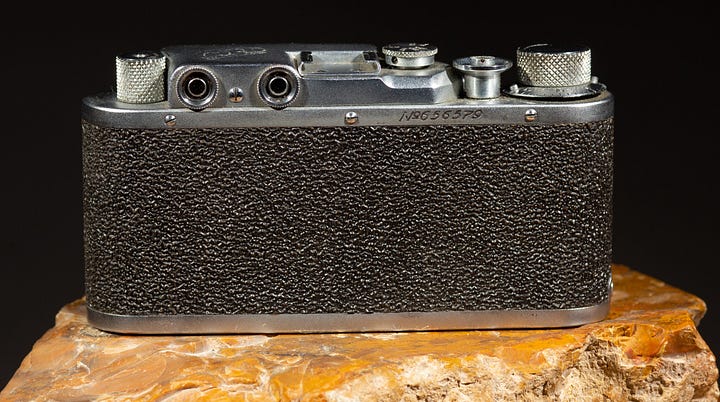
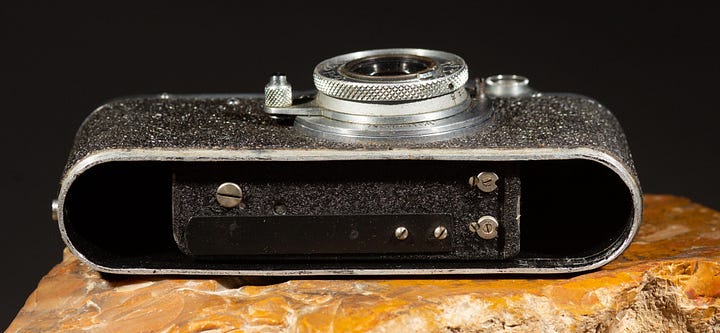

Imitation, is not uncommon in the camera world. Certainly, the entirety of the history of cameras in the 20th Century is one of innovation, followed by blatant copying; early Canon cameras are also direct copies of the Leica II.
The innovators of camera design, Leica, Hasselblad, Rollieflex, Zeiss, Kodak, and others, are venerated for their design innovations, and the cameras that they made command premium prices, today. I have several Japanese cameras, based on European designs, that are saved from charges of direct imitation due to the refinements of the original design that they incorporated into their own designs. I would argue that the design refinements make the Japanese cameras superior to the originals n many ways. While imitation might be the flattery of the mediocre, sometimes the imitation is also a way to improve on the original; I’ll leave that comparison to the reader.



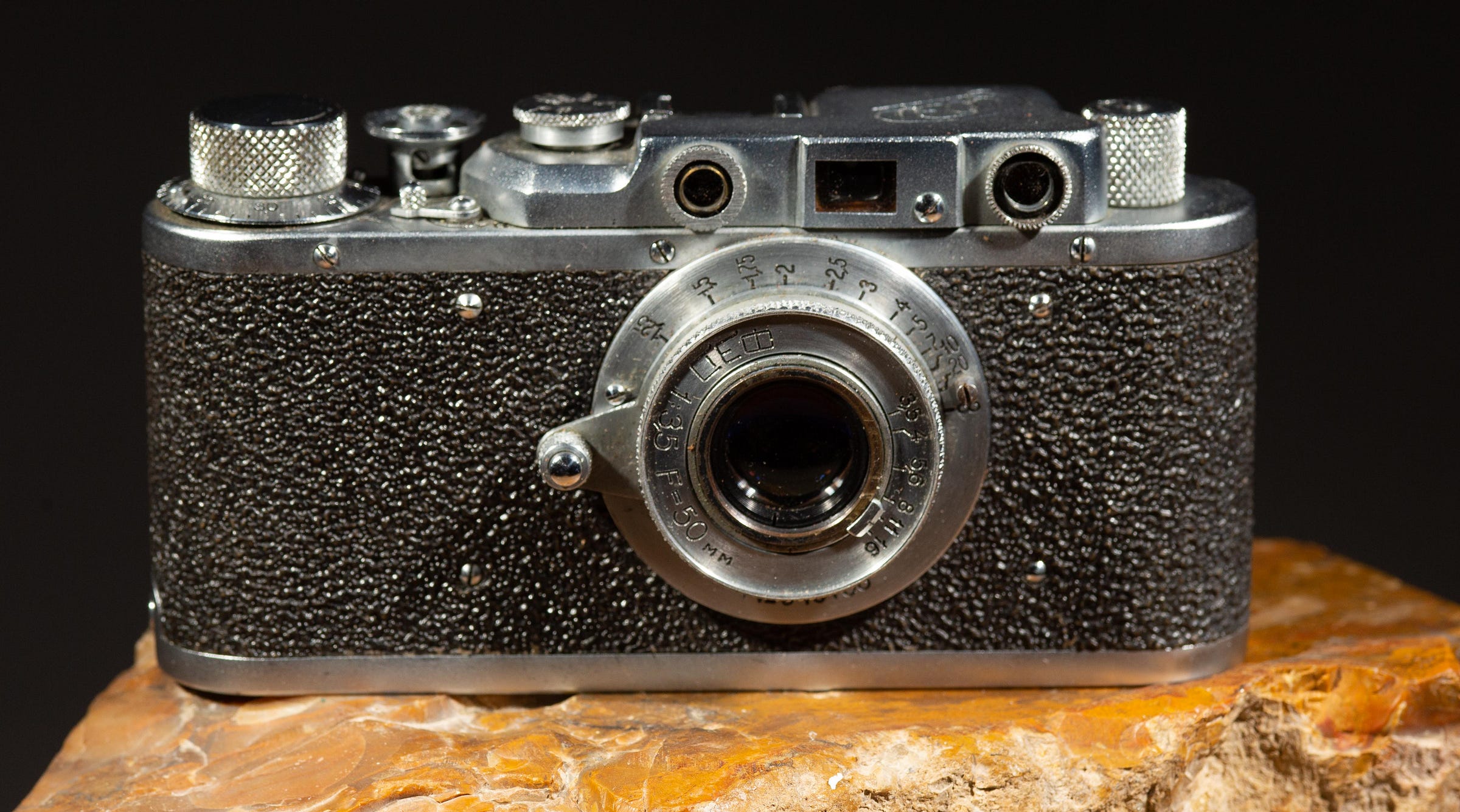
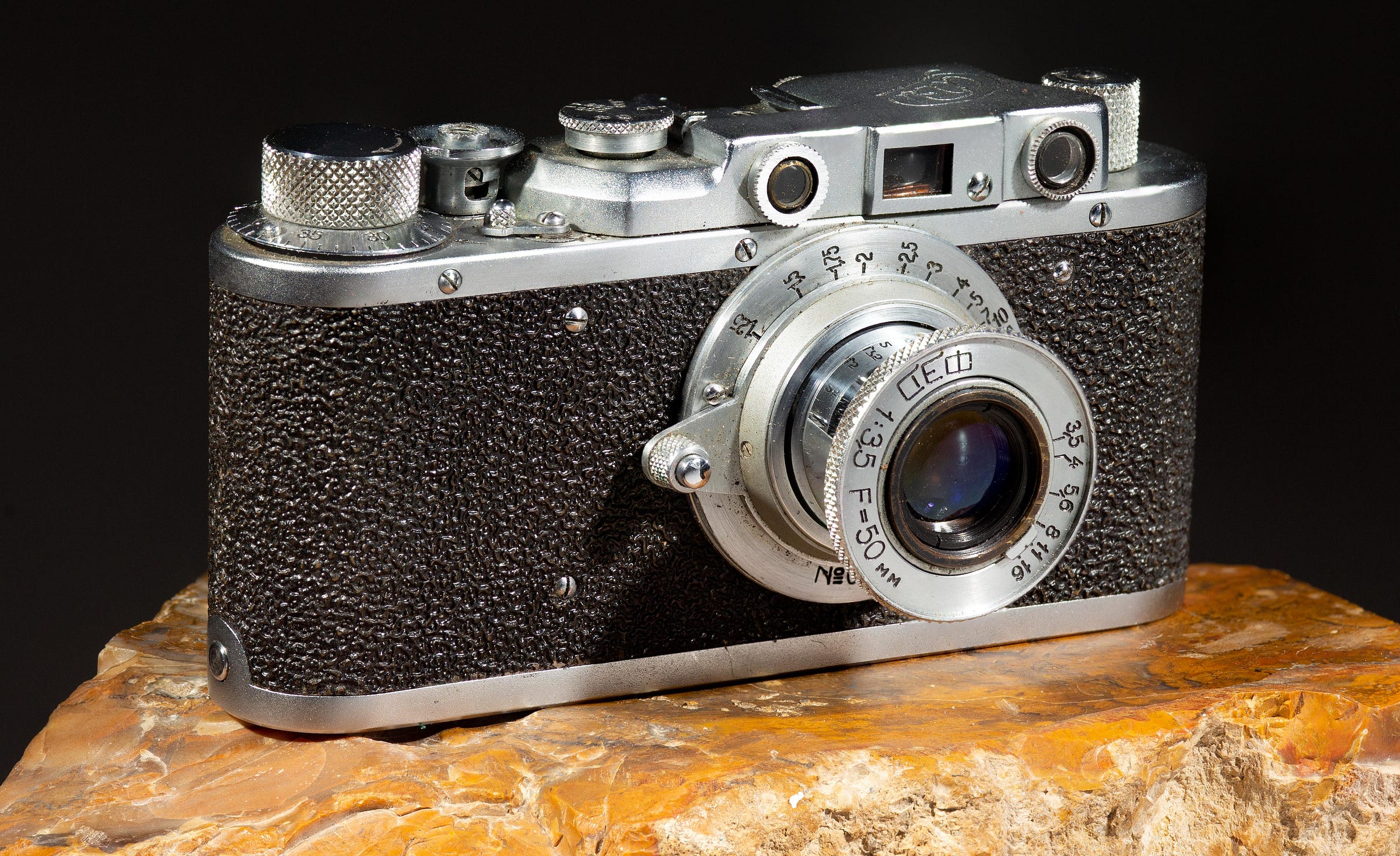
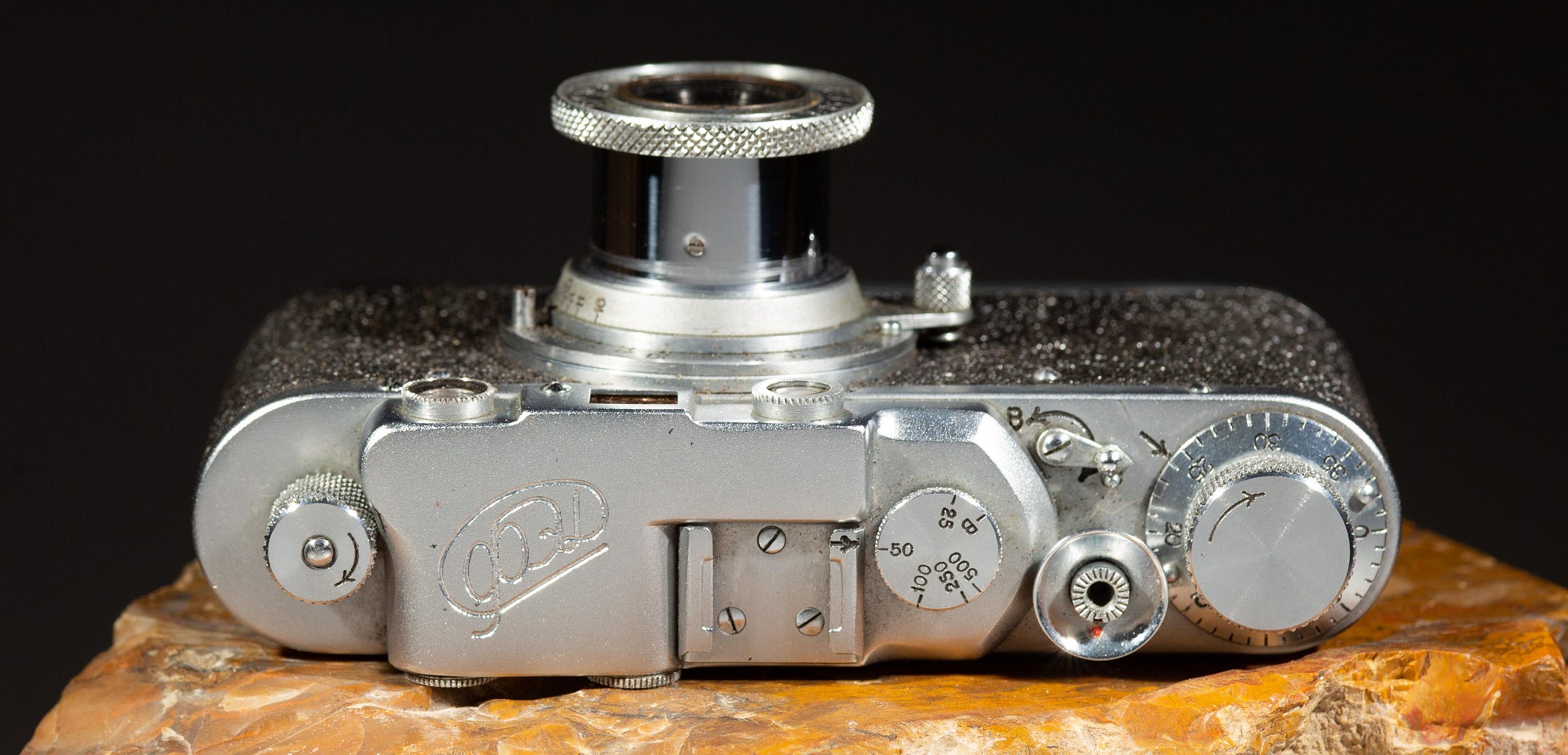
It may be a weird thing, but I have a fascination with these old Soviet cameras. I have a Fed, a Zorki, and a Zenit. Maybe it is because my first "real" camera was a Zenit B. Yes, they are rough around the edges and a bit dodgy, but so am I. Or that is what I have been told. But If find these cameras to be quite interesting and they tend to cost far less than most comparable German brands.
Salivating...